 Written by ContentPowered.com
Written by ContentPowered.com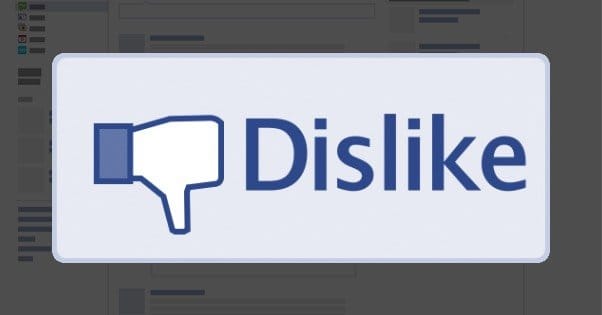
The social world has been abuzz with talk about a Facebook “dislike” button in the works, reportedly from the mouth of Zuckerberg himself. This, of course, naturally leads to all of the usual marketing questions, up to and including selling “dislikes” the same way you might sell likes. Is it unethical?
The answer is, it really will depend on the button itself and its purpose. How does it work? What feelings does it express?
A True Dislike Button
If the Facebook button is truly a “dislike” button, as the opposite of a like, then it could very well be a hugely unethical thing to purchase. The reason for that is simple; who would want to buy a lot of negative sentiment for their own page? No one goes out and buys negative Yelp reviews for themselves. No, if you’re buying negative reviews, you’re buying them for your competition, to make yourself look better in comparison.
There’s a lot wrong with that concept. It’s much like Negative SEO, which is the practice of buying a lot of low quality and spam links for your competitors, to tank their search ranking. Negative SEO might not work, but negative reviews and a dislike button spam might. It depends on how well it’s policed.
Yelp, for example, will filter reviews from accounts that aren’t in good standing, because usually those reviews are spammy. Some legitimate reviews are filtered, but as those users use Yelp more often, their older reviews will be released from this purgatory.
So, buying Facebook dislikes might not be a very useful idea. It’s entirely possible that Facebook will monitor them in hopes of using them as a honeypot to catch spam bots. It would be a simple matter to record a list of everyone who dislikes the posts on a given page, compare it to a list of known bot or spammer identifiers, and remove those accounts – and the relevant dislikes.
The Matter of Likes and Dislikes
There’s also a bit of a fundamental disconnect here. People think about a dislike button and immediately think about likes. Tons of people sell likes online, right? So obviously it won’t be a difficult shift to selling dislikes.
The thing is, the likes we talk about when we’re selling them are different from the likes you think about when you bring them up. The like that is the opposite of a dislike button is a like on an individual post. A post like is a very minor piece of engagement, coming and going in large numbers, and is almost completely inconsequential for just about every reason.
Seriously, post likes are valueless. They increment your post engagement counters a bit, I guess, but it’s the most minimal possible piece of engagement. I’ve seen people like a post just based on reading the headline; no share, no comment, no click, no reading the post. No thought put into the action at all. It’s entirely possible that those likes came from people who have no idea who you are.
For that matter, there are fake websites that exist solely to display fake previews to get people to like and share posts that, if you click through, are 100% trolls. It’s a way to weaponize clickbait and pull a “gotcha” moment on your friends. You can read more about it here, where Fast Company did a review.
The likes we talk about when we sell them, by contrast, are page likes. These are the likes that can only happen one time – unless the user unlikes the page and re-likes it, of course – and create a relationship between you and the user. These are the likes that make a random user into part of your audience. These are the likes that you pay for when you run page growth ads through the Facebook Ads system.
These are the kinds of likes that have value. They open up your followers to advertising and your entire sales funnel. No post like has that kind of power. You can’t target “people who liked post X” in Facebook Ads. You can’t really do anything with post likes except enjoy the tiny bit of increased EdgeRank between you and that user.
Page likes are, by contrast, the foundation of all business marketing on Facebook. Without them, you have no growth and your use of the site is minimal. With them, you can grow into a nationally or globally recognized brand, simply off of your internet presence. They drive your demographic information, they inform your advertising, and everything else.
This is, not coincidentally, why fake page likes are so bad for you. These people matter. If you’re getting fake likes, you’re getting fake people. That means your demographics are skewed, your reach is decreased, your EdgeRank falls, and your exposure is limited. The minor boost to your reputation from people seeing your business with a high number of likes is very, very much counteracted by the loss of value in your audience.
For real here, fake likes will destroy your ability to use Facebook as a marketing platform. You can’t make a lookalike audience to target ads, because those ads will target fake accounts. You can’t rely on your demographics, because those demographics are skewed by the presence of whatever fake information – or information about the clickfarm users in Malaysia or Bangladesh or wherever they are – that ends up loaded in your system. You have low post engagement – including post likes, which you might then try to buy – which makes your posts look poor. For every user who likes you based on the power of the number of page likes you already have, you miss out on 10 or 100 or 1,000 in Facebook ads.
The dislike button, if and when it’s debuted, will not be a page-wide dislike. You won’t be able to dislike an entire brand. That’s just not how it works. It will be a post-level piece of engagement, and will need to be treated as such. For marketers, that means it will be virtually worthless in all likelihood.
Honestly, I expect a straight dislike button on posts will be the domain of three types of people. The first type are the people who genuinely want to express a feeling. If your friend posts that they have cancer, you want to express sympathy, so you dislike it.
The second type of person is the troll, of course. Someone posts a heartwarming story of a puppy being rescued from an abusive owner and being rehabilitated into a fine upstanding citizen of pup-land, and trolls flock to it to dislike it. Really, you won’t even need to buy dislikes; just go to 4chan and try to get them to like the story. They’ll dislike it in bulk just to spite you. Reverse psychology works, man, they have no idea.
The third type of person is the general public disliking a story for a legitimate reason. Take all of those tasteless attempts at newsjacking you see time and again from brands that just don’t seem to understand tact, taste, class, or sense. Imagine if, rather than making the post trend via large amounts of responses and making the companies justify themselves with a “bad press is still press” argument, it could just be disliked into oblivion.
Of course, that relies on the dislike button having some function. Let’s look at the possibilities.
If the Dislike Button Affects EdgeRank
EdgeRank is Facebook’s measure of the relationship between your brand account and each individual audience member. There’s no one EdgeRank rank, and there’s no way to check what your EdgeRank might be. It’s a calculation made for each user for each post, and it changes based on actions or inactions taken. Each time a user likes a post, it increases their EdgeRank with you, and will result in them seeing more of your posts in the future. Each time they ignore or report your post, it decreases their EdgeRank with you, and makes them less likely to see your posts.
So, there are three possible ways a dislike button could function. It could decrease EdgeRank, it could increase EdgeRank, or it could do nothing and be simply cosmetic.
Why would a dislike button increase EdgeRank, you might be asking? Well, that comes from the idea of a sympathy expression rather than an expression of true dislike. If you dislike something, it doesn’t mean you don’t like the person posting it. The interaction is still a form of engagement, and thus is still a positive interaction as far as EdgeRank is concerned. If you really want to decrease your EdgeRank and see less of a page, you have to unlike it and hide it from your feed.
It’s also possible that Facebook would just use the like button as a template internally and wouldn’t think about the ramifications of EdgeRank making a dislike a positive interaction. I don’t think this is likely, though. Facebook has actual talented engineers with critical thinking ability, so they’re not likely to pay so little attention to such a big update to the site.
Now, if the dislike button becomes a form of negative engagement, a decrease in EdgeRank, it would wreak havoc with personal interactions. Looking at it from a business standpoint, having several posts bombed with dislikes could utterly crush your reach. Your value as a page would decrease overall, and other pages would take precedence in the news feed.
It’s also possible that the opposite effect could happen. By being disliked by a ton of bots and clickfarm users, those users then see less of your posts, which increases your visibility to real users. I will admit that this is an edge case, and highly theoretical, but it could work out to be beneficial. Just, you know, don’t go buying yourself a hundred thousand dislikes in the hopes that it rids you of the clickfarm problem. It probably won’t.
If the dislike button is neutral in terms of EdgeRank, there’s really nothing more to say. It becomes a cosmetic tool to gauge user sentiment, but it doesn’t have a mechanical effect on your posts at all.
The Dislike Button Isn’t Real (Yet)
Unfortunately for all the theorists out there, the dislike button doesn’t actually exist (yet). Zuckerberg was misquoted and people made assumptions that have proven to be untrue. Just watch this video.
Zuckerberg explicitly said that the button, when it is released, will not be called a “dislike” button. So, you can throw out a lot of what I theorized above, and pay attention to the bits where I mention sympathy.
Here’s a relevant quote:
- “We didn’t want to just build a Dislike button because we don’t want to turn Facebook into a forum where people are voting up or down people’s posts. That doesn’t seem like the kind of community we want to create.”
This is a very relevant position to take in a world where you have massive sites like Reddit and Imgur operating on voting systems. On both of those sites, content is posted by users. Imgur posts it to a general user submitted section with a few broad categories. Reddit posts it to one of approximately ten bajillion subreddits focused on everything from chocolate to DIY crafts to some variety of niche pornography.
On both sites, there’s a certain downward pressure on new content. There are users who seem to have no purpose in life other than downvote new content so it’s less likely to be seen by other users. Content downvoted on Imgur never reaches the front page and is thus doomed to a life of obscurity. Content downvoted on Reddit can actually be hidden or removed entirely, depending on the rules of that sub.
There’s generally a war going on between upvotes and downvotes. When suitably amazing content is upvoted, it becomes hugely viral, but content that is interesting but not amazing tends to languish. There are a lot of content creators who have left these sites because their content just doesn’t perform well, even though it has every right.
Facebook, very rightly, doesn’t want to make an EdgeRank-powered “downvote” to counteract and balance the “upvote” of the like. They don’t want to turn into Reddit. They don’t want these vote-fueled wars to break out over content.
So what is the true purpose of the proposed dislike button? Again, sympathy.
- “People aren’t looking for an ability to downvote other people’s posts. What they really want is to be able to express empathy. Not every moment is a good moment, right? And if you are sharing something that is sad, whether it’s something in current events like the refugee crisis that touches you or if a family member passed away, then it might not feel comfortable to Like that post.”
The purpose of the dislike button will be to express condolences. If you’ve used Facebook for any length of time, you’ve likely seen people post sad stories, and other people “like” the post and immediately leave a comment saying “Liking this post because I’m sorry, you’re a strong person, you’ll get through this.” Or, you know, something to that effect.
That’s the exact sentiment that Facebook wants to implement. It’s very likely that, rather than building an actual dislike button with a dislike action attached, Facebook will build some kind of “sympathy” or “sorry” button. “I know that feel,” as the denizens of Tumblr would say.
How the Button Might Work
It’s unlikely, then, that the sympathy button will have a negative form of EdgeRank engagement attached. It will be either a neutral form of engagement or it will be positive. Either way, it will be minor. I expect it would be no less potent than the like, in terms of value.
It’s also not likely to be useful for marketers in a broad sense. It may be valuable for organizations like the Red Cross or Doctors Without Borders, who have to deal with humanitarian crises on a daily basis, and who can use a sympathy button to show solidarity and build empathy amongst a large audience. For traditional business, marketing, and brand building? Very likely not.
The most use I could see a brand getting out of it is something like a product recall or going out of stock on an item. Some large, recognized brands might be able to use it in regards to the death of a cherished member of the team or a founder. It won’t, however, be good for general use.
In fact, Facebook might not even make the button generally available. It’s possible that the appearance of the button will be context sensitive, triggering on the use of words like “died” or “passed away.” Facebook likely has a list of negative emotional keywords to flag events like a death, a job loss, or a relationship ending, and can apply the new button to those events and stories. For example, I would anticipate that the change of a relationship status from a stable to an unstable or negative setting – like It’s Complicated or the transition from Engaged to Single – would automatically trigger the sympathy button.
So, back to the original question. Is it unethical to buy dislikes? If the button operates as a sympathy button, no, it won’t really be unethical. To the person who receives the sympathy, it looks like a broad outpouring of support. It’s a little unethical to use it on yourself to make you look more beloved than you are, but it’s not really harming anyone but yourself if you’re caught out doing it. It’s nothing like the potential negative effects of a detrimental EdgeRank dislike button.
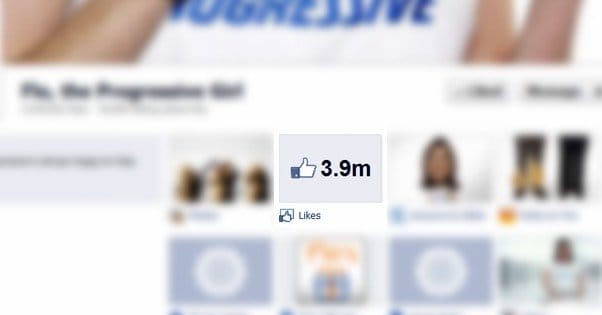
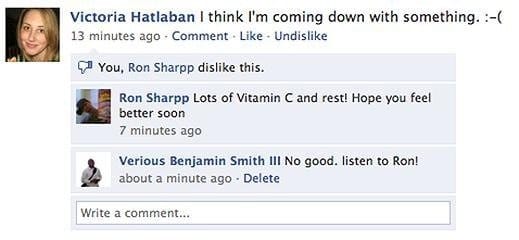
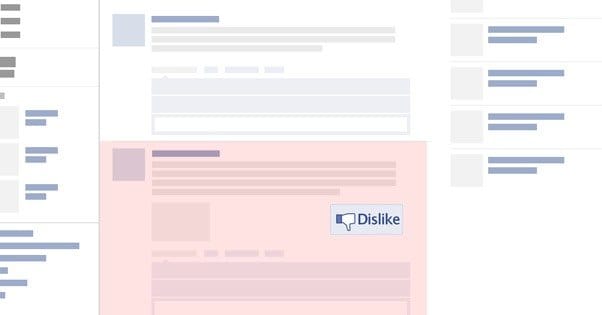
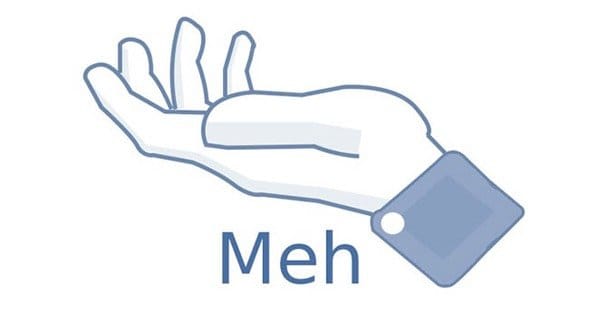
I think a lot of us are waiting to see just how the ‘dislike’ button pans out.